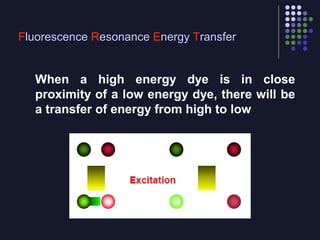

The siRNA selected by Ui-Tei rule satisfy the following four conditions simultaneously: (1) A or U at position 1 from 5′ terminus of siRNA guide strand, (2) G or C at position 19, (3) AU richness (AU ≥4) in positions 1–7, and (4) no long GC stretch ≥10. We advocated the empirically based rule which prescribed the characteristics of highly functional siRNAs ( Ui-Tei et al., 2004), such rule is called as Ui-Tei rule (Figure 1). The knockdown efficiencies of siRNAs are revealed to be highly dependent on their sequences. STEP 1: Selection of Functional siRNA Sequence Thus, the seed region first identifies the target mRNAs, and subsequently form perfect base-pairing with intended target mRNA and induce RNAi by Ago2.īased on the mechanism of RNAi, a target gene-specific siRNA is considered to be selectable according to the following three steps. The seed region is known to be situated on the surface of Ago in a quasi-helical form to serve as the entry or nucleation site for small RNAs in the RISCs ( Ma et al., 2005 Yuan et al., 2005). The transcripts with sequences complementary to the seed region positioned 2–8 from the 5′ terminal are mainly reduced. The target recognition mechanism of this off-target effect is known to be similar to that of miRNA-mediated gene silencing ( Lewis et al., 2005 Lim et al., 2005 Grimson et al., 2007). This phenomenon is referred to as seed-dependent off-target effect and preferably observed in mRNA 3′ UTRs. However, an accumulated evidence from genome-wide experiments indicate that a great number of mRNAs with partial complementarities to the guide strand are also reduced ( Jackson et al., 2003, 2006 Lim et al., 2005 Birmingham et al., 2006 Ui-Tei et al., 2008). The retained guide strand pairs target mRNA with perfectly complementary sequence, and represses it by cleavage by Ago2 protein at nucleotide position 10 of siRNA guide strand ( Elbashir et al., 2001 Hammond et al., 2001 Martinez et al., 2002). The passenger strands of most of the double-stranded siRNAs loaded onto RISC are cleaved by Ago2 protein and degraded ( Matranga et al., 2005 Rand et al., 2005 Leuschner et al., 2006). The siRNA guide strand containing the thermodynamically less stable 5′-end is preferentially retained by RISC ( Khvorova et al., 2003 Schwarz et al., 2003 Ui-Tei et al., 2004). RISC is the effector complex containing Argonaute protein (Ago) with slicer activity ( Hammond et al., 2001 Martinez et al., 2002). Upon delivery into the cells, siRNAs are incorporated into the RNA-induced silencing complex (RISC) as a double-stranded RNA. Optimized Design of siRNAĭuplexes of 21-nucleotide (nt) RNA with 2 nt 3′ overhangs (siRNA) is usually used for RNAi experiments. In addition, we introduce the websites open to the public for selecting siRNA sequences. In this article, we review an optimized method to design siRNA based on the mechanism of RNAi. Although human has more than 20,000 genes, it is desirable to use siRNA which is highly functional and has no effects on any genes other than its specific target.

RNA interference (RNAi) is a broadly used technique by which small interfering RNA (siRNA) downregulates a specific target gene with perfect complementary sequence, and promised to use in therapeutic application for human diseases ( Castanotto and Rossi, 2009 Ketting, 2011).
#Sirna probe design beacon designer software#
In addition, we also introduce the software programs open to the public for designing functional siRNAs. Here we present our siRNA design software for a target-specific RNAi. For understanding accurate target gene function and successful therapeutic application, it may be critical to select a target gene-specific siRNA with minimized off-target effect. We have revealed that the capability to induce off-target effect is strongly correlated to the thermodynamic stability in siRNA seed-target duplex. This phenomenon is referred to as off-target effect. However, accumulated evidences revealed that siRNA could downregulate unintended genes with partial complementarities mainly to the seven-nucleotide seed region of siRNA. Hence, its silencing effect has been assumed to be extremely specific. Twenty-one-nucleotide-long siRNA suppresses the expression of the intended gene whose transcript possesses perfect complementarity to the siRNA guide strand. RNAi is commonly recognized as a powerful tool not only for functional genomics but also for therapeutic applications. RNA interference (RNAi) is a mechanism through which small interfering RNA (siRNA) induces sequence-specific posttranscriptional gene silencing. 2 Department of Computational Biology, Graduate School of Frontier Sciences, The University of Tokyo, Chiba, Japan.1 Department of Biophysics and Biochemistry, Graduate School of Science, The University of Tokyo, Tokyo, Japan.


 0 kommentar(er)
0 kommentar(er)
